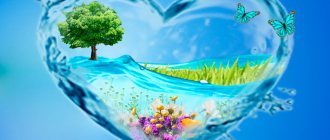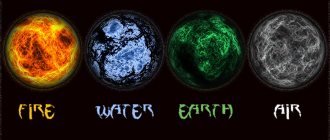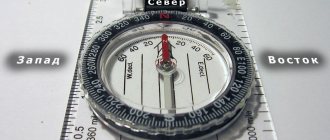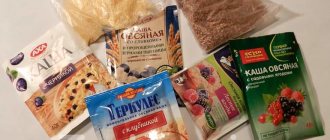Types of water
You can’t live without water, so a substance with the formula H2O is a popular and popular product. It is classified into:
- Distilled, obtained by distillation through a still. It undergoes purification from impurities and salts and is almost no different from the melt water of mountain peaks. But the body needs mineral components, so it is not suitable for drinking.
- Bottled is distributed through retail chains. It is contained in plastic containers and its composition can be drinking, carbonated, mineral, distilled. But usually this is drinking water, which is packaged in containers from 0.33 to 19 liters. This packaging is convenient: 19 liters of water is enough for drinking and convenient for cooking. The shelf life of water in a plastic bottle varies, which is due to the presence of preservatives and the quality of the container.
- Mineral water is rich in mineral salts and trace elements. Water for treatment is released in glass (0.3-0.5 l) and polyethylene containers (0.5-2 l). Since it is intended for different purposes and is used as a dining room, medicinal and for outdoor use, its storage duration is different.
Note: Storage of water depends on the container in which it is located. The liquid does not lose its qualities over time. But its structure deteriorates due to the plastic in which it is stored. Plastic containers have their own shelf life and after it expires, chemical components are released into the water, changing its composition.
How to store bottled water
Water is the main source of life on earth. Naturally, it must be very clean and of high quality. Probably one of the main sources of “life force” is Lake Baikal. Its pure waters have many different properties. However, we will not consider them in our article. We'll talk about how long you can store an open water bottle. After all, a person is a creature that seeks profit in everything. And now water from the glorious lake can already be found on store shelves almost all over the world.
So, bottled water is usually obtained from an artesian well. It subsequently undergoes a series of cleaning measures. All impurities and particles are removed from the water and then passed through a filter system. After this, the liquid is disinfected. For this, chemicals and ultraviolet light are used. Before pouring water into prepared tanks, it is enriched with silver ions.
Only when all stages of preparation are completely completed is the water sent to the bottling and capping line. If production is automated, then the working personnel have virtually no contact with the liquid.
However, you need to understand that bottled water, which is sold in plastic containers, has a limited shelf life once opened. As a rule, the period indicated on the container is three days. But this applies to those cases when the bottle is tightly sealed and stored in the refrigerator. If an open container of water is placed in the sun, it will begin to absorb a large amount of harmful components and become unusable. Of course, this applies to small containers.
As for large bottles with a volume of nineteen liters, they can be stored for a year and a half if sealed. Typically, this water is ordered for office workers. But recently it has become popular among residents of private houses and apartments. And all because the quality of tap water has deteriorated significantly.
But let's return to the issue of storage. So, a sealed container of water can be stored for a year and a half. However, it must be taken into account that even the purest water can lose its beneficial and taste properties under the influence of high temperature and sunlight. Why? Yes, because the container is made of plastic. Under the influence of the factors described above, it begins to actively release harmful components, turning clean drinking water into poison.
We recommend reading: When is it better to harvest pears for the winter - unripe or ripe
Unscrupulous manufacturers often do not indicate under what conditions an opened bottle of water should be stored. It is primarily consumers who suffer from such irresponsible attitude. This is why it is so important to store small, open bottles of water in the refrigerator. As a rule, drinking water in a bottle does not lose its properties for four days. Naturally, if the storage conditions were met. If more than four days have passed, then the water must be boiled before use. However, this should only be done if absolutely necessary. Ideally, it is better to buy a fresh package of water. As for large bottles, it is better to store them in a dark and cool room.
Remember that water that has already been boiled cannot be brought back to one hundred degrees Celsius. Otherwise, harmful metals begin to accumulate in it. Such water is harmful to health.
Finally, let’s add that bottled water comes in two types. The best is considered to be the one extracted from an artesian well. Water collected from a tap and subsequently purified cannot be called ideal. In fact, such water can be obtained at home.
But no matter what kind of water you drink, always remember that any liquid has an expiration date. It must be followed in order for drinking water to truly benefit your health.
Author: Gumerova L. Date of publication: October 20, 2016 Reproduction without the consent of the editors is prohibited.
You can attach pictures to your review.
Unscrupulous manufacturers often do not indicate under what conditions an opened bottle of water should be stored. It is primarily consumers who suffer from such irresponsible attitude. This is why it is so important to store small, open bottles of water in the refrigerator. As a rule, drinking water in a bottle does not lose its properties for four days. Naturally, if the storage conditions were met. If more than four days have passed, then the water must be boiled before use. However, this should only be done if absolutely necessary. Ideally, it is better to buy a fresh package of water. As for large bottles, it is better to store them in a dark and cool room.
What is the best way to store water?
The structure of an aqueous solution is affected by the container in which it is stored. Experimentally, it was found that the best option is if the water is stored in
- silver jug,
- utensils made of steel or enamel,
- glass
The greatest biological activity was observed with a combination of silver and light. Scientists have figured out how to store “living” water for drinking. The best option is glassware placed in diffused sunlight. If you add a silver coin or jewelry to it, the quality will improve significantly.
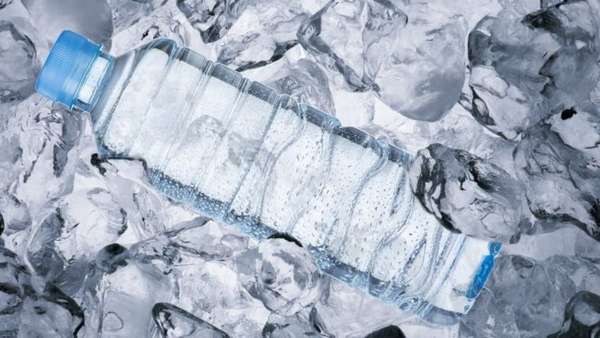
It is considered a bad option to keep the liquid in a plastic bottle or tanks. In synthetic containers, its composition changes significantly for the worse. If the bottle contains tap water, then its storage temperature should not be higher than +7-+10 C. Under such conditions, toxic substances are released less and the proliferation of microorganisms slows down. If the volume of water (19 liters) is not stored correctly, it is used for everyday needs or boiled.
Selecting the tank wisely
Very often, summer residents have a question: how to store water, what container to choose so that the water remains clean.
To store a large volume of water at the dacha in winter, barrels of any size, buckets (if the bucket is galvanized) are suitable, or you can use a canister, and you can also use storage in a flask. When choosing a storage container, you must take into account what the container is made of, the required volume, and shape.
We save water in plastic bottles
Plastic containers are considered the most comfortable, as is storing water in a barrel. It is better to store water in a plastic bottle at a temperature of 20 to 25 degrees, away from light. A sealed bottle of liquid can be stored for up to 12 months. To store water in your summer cottage, choose a dark place. When choosing plastic bottles, pay attention to their quality. And also, if a flask for saving water has become a preference (there are significantly fewer problems when choosing buckets).
After conducting an experiment, scientists proved that the composition of bottled water is also affected by the material of the container. Water must be stored in PET(E) bottles! Pay attention to the markings. Silverware, stainless steel, and storage in aluminum containers have a more pronounced positive effect.
Glass
It is preferable to store water in a glass container, in which the liquid can be stored longer, including for the winter, but provided that the bottle is tightly closed. Most often, glass containers are used to store water after freezing.
Galvanized cookware
When winter comes, water can be stored in a tank or even a canister will do. By winter, galvanized utensils are brought to the dacha, which is characterized by corrosion resistance.
Of course, in everyday life drinking water can be stored in a galvanized container. The question is, is it possible to boil water in it and use it for drinking? Of course, it is possible to store water in a galvanized bucket (my grandmother always stored water this way, and, by the way, I store it today as well), but you should not boil it. At high temperatures, a zinc coating can emit toxic gases harmful to humans, which cannot be said about aluminum containers. Therefore, a galvanized bucket is not always practical in everyday life.
other methods
Store drinking water using clay containers, which is considered an alternative if aluminum containers are not available.
- You can also store water in canisters, which are also made from frost-resistant polypropylene, with increased chemical resistance, as well as in barrels
- When stored in an enamel container, the purity of the water does not change significantly. In a container with added enamel, the liquid is better stored if the container is treated with boiling water. The container should be kept closed during storage.
Thus, the best way to store water is to use glass, plastic, and galvanized aluminum containers. It all depends on having a convenient and dark storage space.
Rules and terms of water storage
How long the quality of water in 19 liter bottles remains depends on the storage rules for such containers. On average, this is 6-12 months from the moment of bottling (see the label). It is better to keep the container away from heating devices and direct rays of the sun. Water will retain its structure at room temperature and in diffused light.
What is the shelf life of 19 liter bottled water if the bottle is already opened? It is believed that the water should be used within 3-5 days. But it is unlikely that such a volume will be consumed quickly. It is advisable to place the container in a cool place and if a lot of time has passed, it will be safer to boil the remaining liquid.
For your information. We use high-quality food-grade plastic, which is marked PET (E). It is extruded on the bottle and it is worth paying attention to this moment. Unscrupulous manufacturers package water in toxic containers labeled PVC or containing methylamine.
Tap water
How long does tap water last in a plastic bottle? It is pre-filtered and poured into bottles. They are left open to allow the chlorine to evaporate. Then the containers are sealed and used indoors for 3 days, and in the refrigerator for about a week.
Boiled water
Sometimes water is boiled for future use and left in an enamel container with a closed lid. Under the influence of high temperatures, microorganisms, both beneficial and harmful, die. If there are a lot of salts in the liquid, they settle to the bottom. The shelf life of boiled water directly depends on its composition and quality.
If water is used for drinking, it is usually boiled in small quantities and consumed almost immediately. According to experts, the shelf life of cold boiled water is 12 hours.
Mineral water
It is difficult to answer the question of how long mineral water can be stored, since its composition and purpose are different, as are the containers used. On average, this period ranges from 3 to 18 months (plastic packaging) or 24 months (glass containers). Each type of mineral water has an expiration date, which the manufacturer indicates on the label.
Water with a mineral composition is stored under certain conditions:
- temperature regime +5-+20С,
- twilight ventilated place,
- lack of sun rays,
- in a horizontal position.
If the mineral water is opened, then the shelf life of the water is limited to 5 days. When the composition contains organic substances, it should be kept in the refrigerator and its use is limited to a week. If all requirements are met, the mineral composition will be preserved in full. And such water is not much different from the original - the source from which it was obtained.
Advice. If the information on the label indicates “expiration date,” then denaturation of the product has already occurred, in which the composition and quality of the mineral water have changed. This product must be returned to the store.
Well water
What are the benefits of springs? A crystal clear source of moisture, saturated with useful minerals, emerges from the ground. Usually it is collected in large containers. But the long shelf life of spring water in 19 liter plastic bottles is questionable.
The ideal container for it would be ceramic or glass containers. Metal canisters with a neutral coating inside are also suitable. Natural water remains useful for up to 3 years. It is important that the source is verified and reliable and actually contains that very clean, crystal water.
The expiration date of bottled water and the date of its bottling are indicated on the label. Try not to neglect this information and store water according to the rules. And although it refers to products that are practically not subject to spoilage, there are situations when the quality is questionable. And given that we are 80% water, its composition and structure affects the health of the body.
,You can store peeled walnuts at home for a long time in an airtight container even if, Meat is classified as a perishable product, and it can be stored for up to two years. Plants are designed to decorate human life, but they themselves are short-lived. How to make chrysanthemums
Shelf life depending on water quality
Manufacturers of bottled water must obtain quality certificates for their product. Water can be extracted from an artesian well or bottled from a tap, but at the same time it is filtered and saturated with mineral elements. You need to pay attention to this when purchasing liquid.
If the manufacturer is one hundred percent confident in the quality of his water, then he can obtain a certificate of conformity on a voluntary basis. If the liquid has passed the appropriate certification procedure, then the shelf life depends on the type and purpose of the water. For example, bottled mineral water can be stored even longer than a year (24 months). The exact expiration date must be indicated on the label.
Regular drinking water can be stored in a sealed bottle for up to 24 months, provided that storage rules are followed. If this period has expired, then you should not drink the water, as this is fraught with negative consequences for health.
Mineral
Mineral water is water that contains dissolved salts , trace elements, and biologically active components.
Mineral waters are not only for drinking ( table and medicinal ), but also for external use .
Many of them are widely used in spa treatment - for baths, inhalations, rinsing, irrigation and washing of organs, etc.
Mineral waters are sold in volumes of 0.33–0.5 liters in glass containers and 0.5–2.0 liters in polyethylene containers.
Mineral water is stored from 3 to 18 months if it is packaged in plastic containers, and up to 24 months if bottles are made of glass.
Each mineral water has its own expiration date, which is notified to the consumer by marks on the bottle label.
Uncorked water should be consumed within 5 days at the latest. Waters with organic substances ( such as naftusya) are stored for no longer than 1 week in the refrigerator.
If the specified periods and storage conditions are met, mineral waters from a bottle have the same effect on the body as those taken at resorts directly from the sources. Long-term storage leads to denaturation of the product - a change in taste and properties, and if you purchased such a product, you have every right to return .
What containers are best used for storing drinking water?
First of all, it should be noted that it is correct to store water in a closed container and certainly in a glass one.
If you do not have such a container on hand, take a container made of food-grade plastic, which includes polyethylene terephthalate, polyethylene, polycarbonate, polyvinyl chloride (PVC), polystyrene and polypropylene.
The listed polymers are chemically inactive and harmless, but manufacturers add technological substances - stabilizers - to improve their strength. As a result of chemical decomposition, once in the water, they can have a toxic effect. We get the same effect when drinking water is stored for a long time in a plastic container or after it is heated. In addition, polymeric materials, changing (aging), release decomposition products.
Next, we will talk about the main polymer materials that are used in the production of plastic containers for storing drinking water.
Polyethylene (abbreviated as PE) is a thermoplastic saturated polymer hydrocarbon. Its molecule contains ethylene units.
Water and other polar liquids do not wet polyethylene; in addition, organic solvents do not affect it at room temperature. When heated (up to +70 °C and above), PE swells and then dissolves in aromatic and chlorinated hydrocarbons. Xylene, decalin and tetralin dissolve polyethylene best. Also, at high temperatures, PE decomposes (usually it is pre-softened).
Polyethylene is resistant to strong acids and alkalis and is impervious to moisture. It reacts differently to organic solvents (depending on the chemical basis of the polymer), and is not physiologically dangerous.
Polyvinyl chloride (abbreviated PVC) is a product obtained as a result of complex chemical synthesis based on natural materials - sodium chloride and petroleum hydrocarbons.
During the production of polyvinyl chloride, the intermediate product is VX (vinyl chloride) with a monomer structure. Further, during polymerization, VC monomers are converted into PVC polymers. They are already completely inert and non-toxic. The final polymer contains only 0.1 ppm, although the MPC of toxins (maximum permissible concentration) in plant foods should be 10 ppm.
To give PVC certain properties, various additives are used - stabilizers, plasticizers and fillers. Stabilizers are divided into two types - Ca/Zn (calcium/zinc) and even highly toxic lead compounds can be used.
Polyvinyl chloride is very popular due to its low cost. PVC is used to produce disposable tableware, containers for household chemicals, cosmetic bags, and bottles for water and drinks. After some time, the PVC begins to release VC (vinyl chloride). This carcinogen gets into the water, from it into food, and with food into the human body.
Recommended articles on this topic:
According to research, vinyl chloride begins to be released a week after liquid is poured into a plastic container. After a month, for example, several milligrams of VC accumulate in mineral water (according to oncologists, this is quite enough for the development of cancer). Under no circumstances should plastic bottles be reused, although we see this all the time.
Polystyrene (abbreviated as PS) is obtained from the polymerization of styrene (viniobenzene). This product belongs to the thermopolymer class of polymers (resistant to thermal influences). Its chemical formula is [-CH2-CH(C6H5)-]n-. The phenyl groups in polystyrene interfere with the ordered arrangement of macromolecules and the creation of crystalline compounds.
Polystyrene is characterized as a rigid and at the same time brittle amorphous polymer with a significant degree of optical light transmission and low mechanical strength. When finished, it is colorless, cylindrical granules.
The density of PS is low (1060 kg/m 3 ), thermal resistance is up to +105 ° C, shrinkage during injection molding processing is 0.4–0.8%. It is an excellent dielectric, frost-resistant (withstands temperatures down to -40 ° C). It has little chemical resistance (except for diluted acids, alkalis and alcohols).
In order to improve the qualities of PS, it is modified by mixing it with other polymers - it is cross-linked and styrene copolymers are obtained.
Polystyrene is soluble in gasoline, toluene and acetone.
What is structured water, how to obtain and store it
Today, structured water is quite popular, which is considered miraculous for the human body. The structure of water changes when frozen and heated. Most often it is stored frozen in glass containers.
At home, structured water can be obtained by freezing in several stages:
- To begin, filtered water is poured into an enamel container and sent to the freezer until a thin ice crust forms. After which this ice is removed and thrown away, since at temperatures from 0.28 to 3.8 degrees, the elements tritium and deuterium, which are harmful to health, freeze.
- Next, the water is left in the freezer until two-thirds of the volume freezes. Water that has not frozen is drained, along with the light elements and chemical additives remaining in it.
The ice that remains after all stages of freezing is structured water. It can be kept in the freezer and, if necessary, defrosted in portions. Or defrost all at once, pour into glass jars and store in the refrigerator. Many claim that storing structured water in silver dishes improves its properties several times.
This water should be kept in an enamel pan, covered with a tight lid, for no more than 12 hours. After this time, microbes from the environment begin to multiply in it, and boiled water can cause more harm than good.





